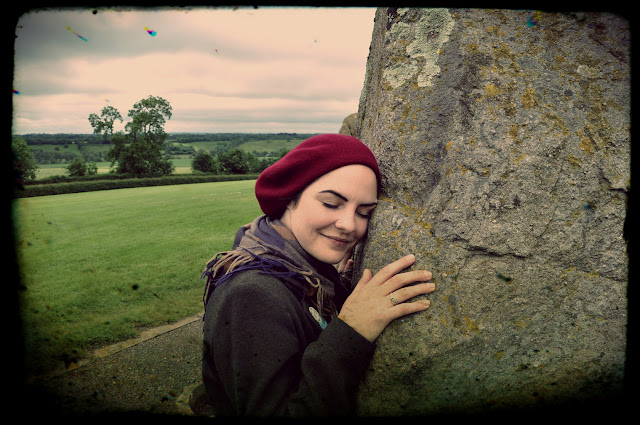The main focus of our recent jaunt round County Meath was a visit to Newgrange passage tomb. Newgrange is part of a complex of monuments built along a bend of the River Boyne known collectively as Brú na Bóinne and it was a place of astrological, spiritual, religious and ceremonial importance in Neolithic times. It was constructed by a farming community that prospered on the rich lands of the Boyne Valley over 5,000 years ago (about 3,200 B.C.), making it older than Stonehenge in England and the Great Pyramid of Giza in Egypt. Far out.
Along with the nearby mounds of Knowth and Dowth (and about 35 smaller mounds in the area), Newgrange has been designated a World Heritage Site by UNESCO. It is a large kidney-shaped mound covering around an acre and retained at the base by 97 kerbstones, some of which are richly decorated with megalithic art. The 19 metre long inner passage leads to a cruciform chamber with a corbelled roof which has remained water-tight for all of its 5,000 year history. Far out.
Here's Danny crossing the powerful Boyne river. It is said that anyone who drinks from the Boyne in June will become a poet and even though we visited in June, the river was flowing so fast that I was scared to approach the banks for a sup lest I be swept away!
This is the lightbox through which the rising winter solstice sun passes, illuminating the inner chamber. Ten lucky people are chosen from a ballot to be present in the chamber for the solstice but we had to make do with a simulation of the light travelling through the passage and into the large chamber but unfortunately photography is not allowed inside. The famous kerbstone outside it is carved with swirling symbols about whose meaning we can only guess because the people who carved it died 5,000 years ago. Far out.
I loves me some magic rocks. This one is a remnant of an old stone circle surrounding Newgrange.







No comments:
Post a Comment